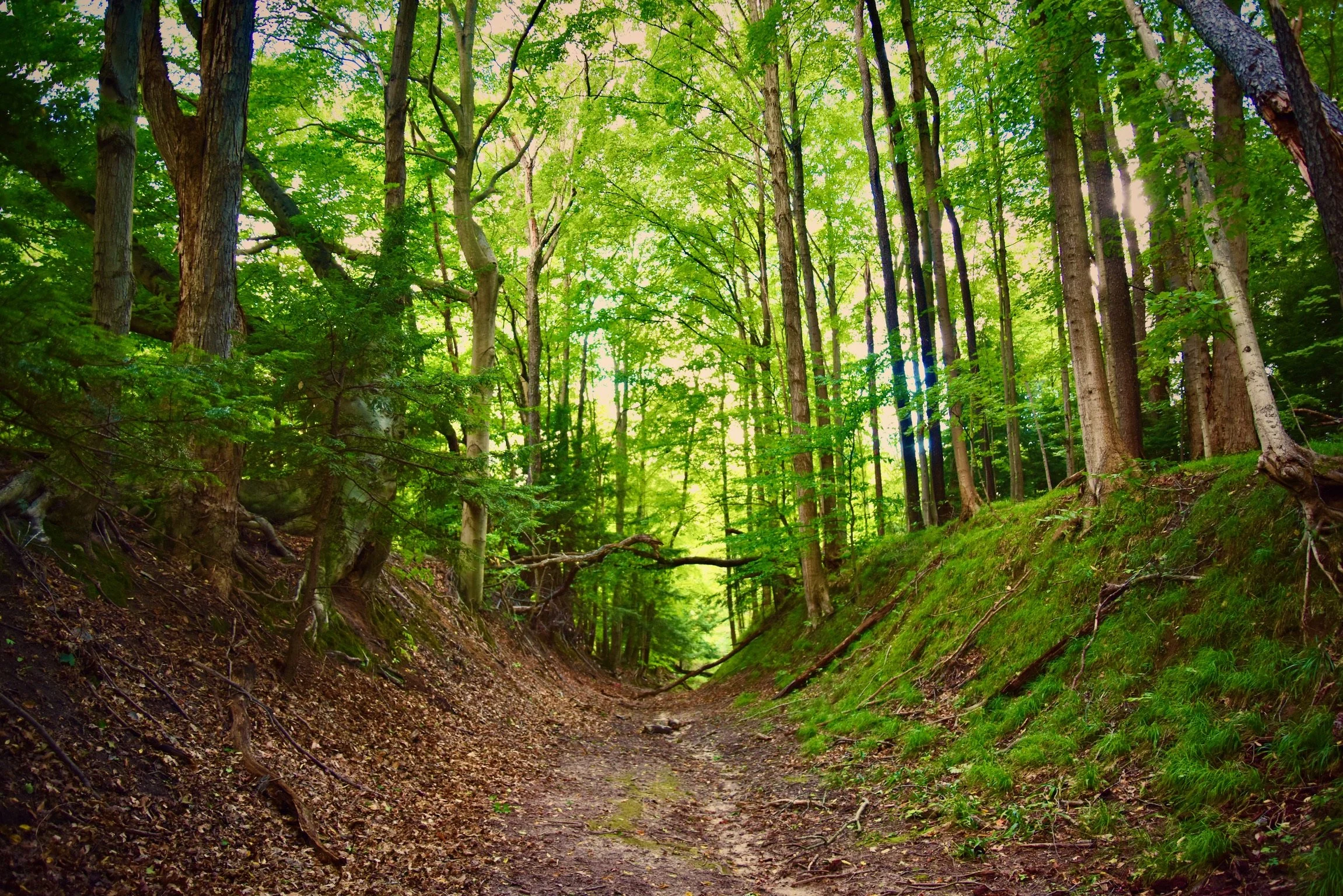The Oceana Coastal Conservation Corridor
The Oceana Coastal Conservation Corridor project will enhance resilience and connectivity of vulnerable forestland through a combination of reforestation, invasive species management, and K12 place-based stewardship learning. Two project sites in Benona Township connect Lake Michigan to upper Stony Creek in a 400-acre coastal corridor.
To connect this forestland, Oceana Conservation District, West Michigan Agroforestry Partnership, and a variety of local partners will plant 20,200 trees to support 75 acres of HWA and Autumn Olive treatments. Students in CEJEST identified disadvantaged communities will be engaged in STEM programming to inspire the next generation of stewards. This project is funded through the US Forest Service: Great Lakes Restoration Initiative.
Refer to this webpage for project and event updates over the course of the project life, summer of 2024 to summer of 2026!
Project update: summer 2024
We have hit the ground running this summer with site preparation and planting planning, stakeholder and community outreach, site testing for seedling survival using a variety of planting and caging methods, and the piloting of The Tree Lab.
Our Why
Oceana County is a historically underfunded and underserved community that houses invaluable biodiversity and natural resources. Our 25 miles of Lake Michigan coastline is our first line of defense in the conservation of soils, water and important ecological habitat. As climate change, invasive species, and other stressors continue to threaten the health of our forests, innovative reforestation solutions are needed. We believe a holistic approach to reforestation will be essential for longevity of our coastal forests.
The current greatest threat to our coastal habitat is the decimation of our Eastern Hemlock population, a keystone species in Michigan’s forests. An invasive insect, Hemlock Woolly Adelgid, extracts sap from hemlock trees causing needles and buds to die. Over time, canopies thin, trees take on a grayish appearance and growth slows. Without treatment, infested trees die within four to ten years. Current treatment methods use insecticides (imidacloprid or dinotefuran) to successfully eradicate hemlock woolly adelgid from infested trees, however retreatment is necessary every 4-7 years to prevent reinfestation. These temporary treatments are costly and require specialized equipment, labor, and knowledge. With 170 million hemlocks in Michigan, the demand for treatment severely outweighs the state’s available resources. You can read more about HWA and treatment options available on our invasive species webpage linked here.
It was clear to us that a sustainable solution to Michigan’s deforestation problem would need to address the threat of HWA while curbing the chance of reinfestation and deepening the level of community invovlement in conservation efforts. This is why our project’s structure is three-fold: Support treatment of invasives to protect pockets of surviving hemlock, reforest open canopy areas with species that provide similar wildlife and stabilization benefits, and finally provide educational opportunities to inspire and actively engage the next generation of conservation stewards.
Step 1. Treatment
Treatment of HWA and other wide-spread invasive species by our neighbors at Muskegon Conservation District will prepare our project sites for plantings. Restoring hemlock stands to full health, we aim to create pockets of “bulletproof” hemlocks, or hemlock groves protected by insecticide and enveloped in a larger, more diversified forest to decrease reinfestation rates.
Step 2. Reforestation
Following nature’s lead, we have noted the natural regeneration of White Pine, White Cedar, White Spruce, and Balsam Fir in open canopy areas where hemlock have succumb to HWA infestations. We will utilize these species to cluster plant in areas of deforestation to provide the water temperature stabilization, erosion control, and wildlife habitat and food benefits of hemlocks while buffering our “bulletproof” hemlock pockets. This will further diversify our coastal forests, increasing resiliency to climate change and new invasive pest introduction and decreasing the chance of HWA reinfestation.
Step 3. STEM Education
This project would not be holistic if we did not think about the bigger picture; the future of conservation in Michigan. We firmly believe that providing educational opportunities will increase connection to the beautiful natural resources of Oceana County and will inspire our youth to pursue local careers and passion projects related to STEM. We have bright minds in our community that deserve investment and crave exploration. That’s where The Tree Lab comes in.
The Tree Lab: mobile STEM education place-based learning experience
The Tree Lab is an unforgettable tree-science and reforestation experience designed for students, teachers, and community organizations of all sizes.
A mobile living-learning laboratory, The Tree Lab is a place-based, STEM education adventure, where participants gain firsthand career training in agriculture, forestry, natural resources and ecosystem restoration.
The Tree Lab works in K12 schools, public parks, private forests and natural communities, where everyone leaves connected, inspired and engaged!
The Tree Lab is comprised of 6 experiential tree science adventures:
The Tree Library- Opening Orientation
The Big Tree Hangout + Timber Technology
The Nursery School
The Agroforestry Command Center + Design Laboratory
The Tree Planting Experience
Connecting to Place- Closing the Circle
Find our measurables, site maps, timeline, and more below!
-
Oceana County Public Schools
Michigan Department of Natural Resources
Muskegon Conservation District
Coulter Farms
West Michigan Cooperative Invasive Species Management Area
Camp Miniwanca - American Youth Foundation
West Michigan Shoreline Regional Development Commission
Trout Unlimited
Little Point Sable Association
Cheyenne Hills Association
Woods and Dunes Nature Preserve
Deerwood/Timber Dunes
Stony Lake Property Owners Association
Pentwater Lake Association
Stony Lake Improvement Board
MI STEM
West Michigan Great Lakes Stewardship Initiative
Laughing Tree Bakery
Dark Water Coffee
Get Involved!
Community partnership is fundamental for the success and longevity of this project. Here are some ways we’d love to involve you:
Help us build and pilot The Tree Lab, either through donation of your time as a volunteer or financial contributions to help gather supplies.
Help support a phase two in where we fund the coastal corridor focusing on another watershed in the county. We will need new community partners and project sites, pre-planning, and stakeholder organization.
Please email Stewardship Coordinator Sky Harsch at sky.harsch@macd.org
































